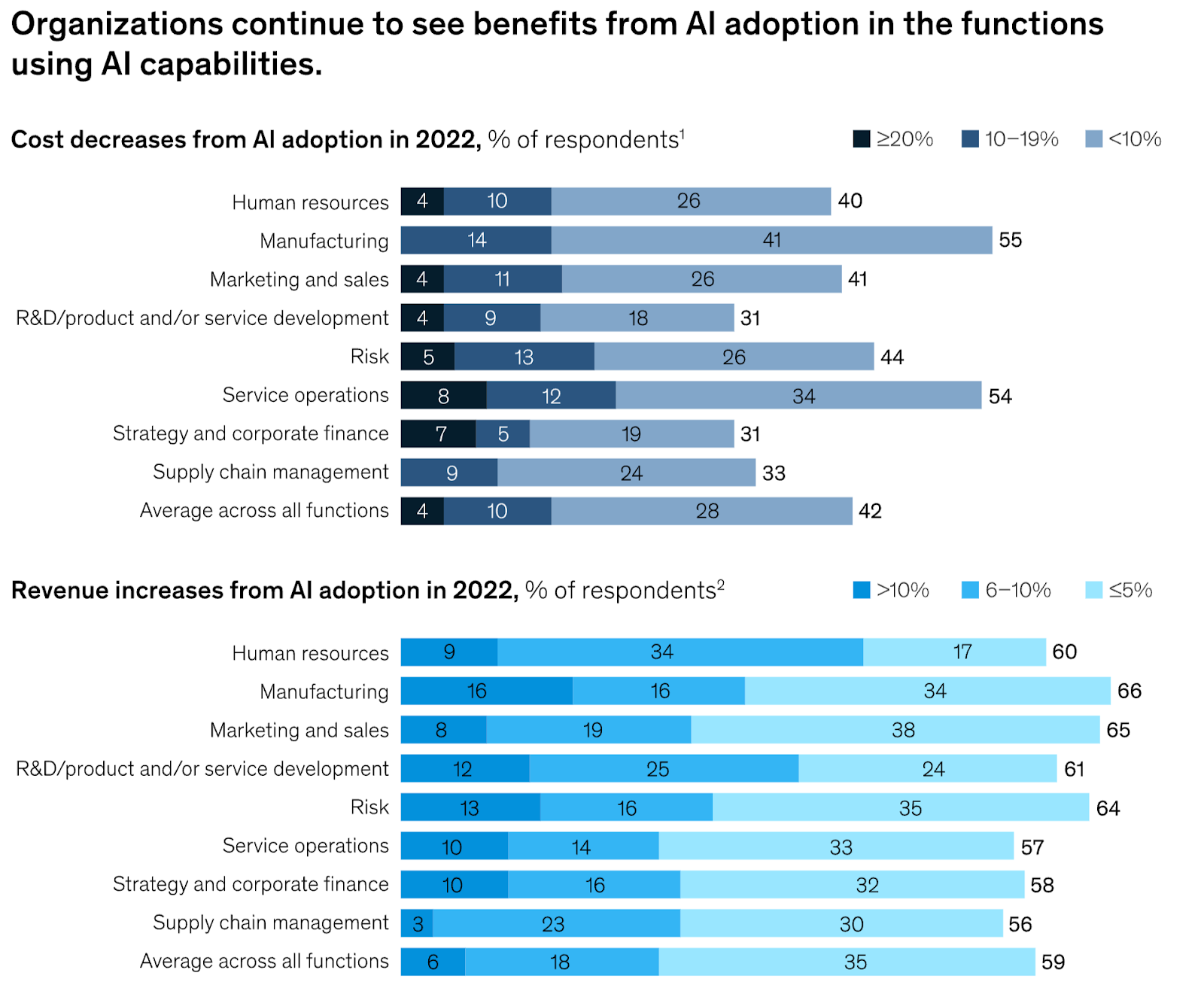Embedded AIOps(Artificial Intelligence for IT Operations) addresses this shift by placing automation and intelligence directly within the systems and equipment where operations take place. By enabling real-time monitoring, issue detection, and response at the source, it ensures consistent performance even in environments with limited or no connectivity.
This article explores what Embedded AIOps is, how it’s being applied across industries from small manufacturers to global logistics networks, and why it’s becoming a critical component of modern operations.
Executive Summary
Embedded AI is reshaping IT operations by shifting intelligence from centralized systems into the infrastructure itself. This shift is driving the emergence of Embedded AIOps—AI integrated directly into the operational stack to enable fast, adaptive decision making. Designed to optimize IT and operational systems, Embedded AIOps delivers autonomy where it's needed most.
Unlike traditional models that rely on centralized cloud processing and batch analytics, Embedded AIOps operates at the edge with minimal latency, enabling immediate, context aware decisions where the data is generated. This capability is critical in environments demanding high reliability and autonomy such as factory floors, logistics networks, telecom systems, and defense platforms.
As these technologies evolve, operational intelligence is becoming a core enabler of automation, resilience, and efficiency. Embedded AIOps represents a growing segment of vertical AI—intelligent systems designed with deep domain expertise to address complex, high-stakes challenges.
Industry analysts forecast rapid adoption:
According to Gartner, by 2026, 60% of large enterprises will adopt AIOps platforms. Meanwhile, Oxmaint reports that these systems can reduce downtime by up to 50% and lower operational costs by more than 30%.
At Venture Forward Capital, we believe these systems are becoming a foundational layer of modern operations. As operational complexity grows, the need for intelligent, adaptive infrastructure will only intensify creating both disruption and opportunity. We expect this to fuel a multi billion dollar market transformation over the next ten years.
The Shift Toward Vertical AI Adoption
Embedded AIOps is rapidly gaining adoption across sectors that rely on real-world infrastructure and time-sensitive physical systems.
While still in the early stages of full operational transformation, momentum is clearly building. According to McKinsey, 55% of organizations have implemented AI in at least one business function, yet only 31% use it across two or more. Early adopters are already seeing meaningful returns: over half report cost reductions in operations, manufacturing, and supply chain, while 33% cite revenue gains exceeding 10% in service operations alone.
Several technical forces are converging to accelerate this shift:
- The rise of lightweight, fine tuned models that can run on distributed or edge hardware (CIO.inc)
- The adoption of cloud native and Kubernete based orchestration is enabling scalable deployment and lifecycle management of distributed edge AI systems (Siemens)
- The growing demand for latency sensitive, mission critical automation across industries like manufacturing, logistics, and finance (Business Insider)
The organizational impact of this shift is just as profound. As AI becomes more embedded in real world operations, companies across the spectrum, from industrial SMBs to global enterprises, are rethinking how they work, reskilling teams, and redesigning core processes.

Among leading AI adopters, 73% report making significant workforce changes. In service operations, over half expect headcount reductions as new technologies take on more complex and high stakes tasks. This shift is positioning Embedded AIOps as a scalable approach to operational improvement, with uptake increasing across high-priority business functions.
What Is Embedded AI and Why It Matters
Embedded AI refers to intelligent systems integrated directly into software, hardware, or devices, enabling them to sense, reason, and act autonomously in real time. These systems often run on edge hardware, operating locally where the data is generated, not in a distant cloud (Advantech).
This shift isn’t just about performance; it’s about unlocking new operational models
The push toward Embedded AI is driven by the need to overcome the key limitations of centralized AI:
Latency
Cloud based pipelines introduce delays; embedded systems respond in milliseconds (ImaginationTech)
Resilience
Systems must function independently, even without consistent connectivity (ImaginationTech)
Scalability
Centralized inference can’t efficiently handle high-frequency, distributed data streams (Fedscoop)
Bandwidth
Continuous cloud interaction drives up costs and risks, especially in edge deployments (DesignNews)
Key Differences: Embedded AI vs Traditional AI

Real World Examples
EyePop.ai, one of our portfolio companies, brings embedded AIOps intelligence to high urgency environments such as manufacturing, retail, and logistics, particularly for SMBs and smaller teams that lack dedicated ML engineers or the resources to manage complex cloud infrastructure.
EyePop enables non technical users to train and deploy computer vision models for tasks such as defect detection, inventory tracking, and quality control all without writing code. Unlike traditional cloud based tools, EyePop’s inference runs on-device, allowing decisions to be made instantly, even without connectivity. (EyePop.ai)
Use case: Rapid Medical
One illustrative deployment is Rapid Medical, a logistics platform for medical sample transport think “Uber for diagnostics.” Drivers use a mobile app to photograph samples at pick up and drop off. Initially, these images were only used reactively to resolve delivery issues. But with EyePop, the company realized they could proactively use computer vision to verify that samples were correctly handled in real-time, on-device.
Field Impact:
- Reduced operational error by verifying handling at the point of contact
- No need for a cloud connection, critical in distributed or low-bandwidth environments
- Enabled a lean ops team to deploy AI features without in-house ML expertise
This is the kind of leverage embedded AI offers: not just speed, but autonomy and the ability to scale real time intelligence to teams that otherwise couldn’t afford it.
Conclusion
Embedded AIOps is redefining how critical systems operate by bringing real time intelligence directly to the edge.
This shift marks the beginning of a new layer in intelligent infrastructure. As AI becomes deeply integrated into physical systems, companies that adopt embedded approaches will lead in performance and adaptability. The opportunity is clear, the technology is ready, and the next wave of industry transformation is already underway.






